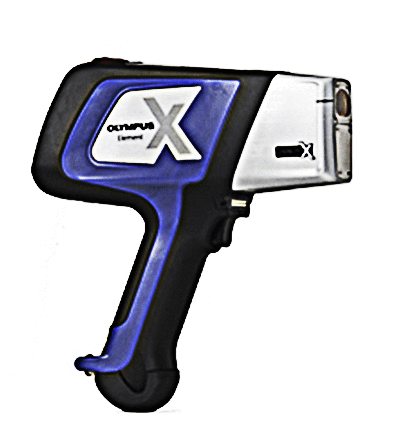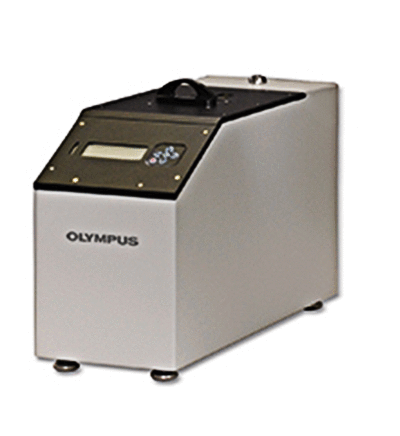水泥窑处理固体废物,可以消除使用固体废物处理设施的运营成本,并可以发现替代燃料和原材料,从而实现经济和环境效益,包括减少二氧化碳排放。水泥窑协同处置固废的核心在于充分利用水泥生产过程中固废中的可燃成分和灰分物质。结合水泥窑的生产特点,采用合适的技术方案可以帮助减少垃圾,减少垃圾对环境的影响,同时将其转化为资源或能源。法规对入窑前的固体废物中重金属和其他污染元素的含量进行了限制。一些重要的法规包括: 水泥窑协同处置固体废物环境保护技术规范(HJ 662-2013) 水泥窑协同处置固体废物技术规范(GB 30760-2014) 符合法规和管理固体废物协同处置许多水泥制造商在预处理过程中使用手持式 XRF 分析仪(例如我们的 Vanta™ 系列)在固体废物进入窑炉之前测试有害元素和有毒物质。
In cement production, it’s critical to identify and analyze solid waste as it arrives and before it enters the kiln to help ensure the waste is free of heavy metals and toxic substances. One tool that plays an important role in this process is the handheld X-ray fluorescence (XRF) analyzer.
In this post, we will explore why handheld XRF analyzers are essential testing tools for coprocessing solid wastes in cement kilns and cover some of their key benefits for the application.
The Importance of Coprocessing Solid Wastes in Cement Kilns
The technology for coprocessing solid wastes in cement kilns was developed in the 1970s. Since the 20th century, some countries have combined the concept of waste treatment with circular economy and sustainable development.
By using cement kilns to treat solid wastes, the operational cost of using solid waste treatment facilities can be eliminated and alternative fuels and raw materials can be discovered, achieving economic and environmental benefits, including the reduction of CO2 emissions.
The core of coprocessing solid wastes in a cement kiln lies in full utilization of combustible components and ash materials in solid wastes during cement production. Combined with the production characteristics of a cement kiln, adopting the appropriate technical solution can help reduce garbage, reducing its impact on the environment while turning it into a resource or energy source.
Regulations have set limitations on the content of heavy metal and other pollution elements in solid waste before it enters the kiln. Some important regulations include:
Environmental protection technical specification for coprocessing of solid wastes in a cement kiln (HJ 662-2013)
Technical specification for coprocessing of solid wastes in a cement kiln (GB 30760-2014)
To meet regulations and manage the coprocessing of solid wastes, many cement manufacturers use handheld XRF analyzers, like our Vanta™ series, during the pretreatment process to test for hazardous elements and toxic substances before solid waste enters the kiln.
在水泥窑协同处理固体废物的预处理过程中使用手持式 XRF 分析的好处 我们的 Vanta 分析仪对预处理过程有很多好处: 提供大面积的快速覆盖,提高采样密度以便快速决策 帮助现场操作员解决紧急问题通过高效的现场分析立即对各种情况进行筛选 可用于筛选样品以在实验室进行进一步分析,确保仅将正确的材料发送到实验室以降低测试成本 现场提供详细信息,使水泥企业能够优化固体成本废物处理 提供从百万分之几 (ppm) 到百分比水平的准确结果,有助于确保良好的检测限 (LOD) 带有清晰触摸屏显示屏的便携式设计使分析仪成为理想的现场分析工具 可以测试重物水泥公司关注的金属,包括钒 (V)、铬 (C)、锰 (Mn)、镍 (Ni)、铜 (Cu )、锌 (Zn)、砷 (As) 和镉 (Cd) 以及其他有害元素
The Benefits of Using Handheld XRF Analysis for the Pretreatment Process of Coprocessing Solid Wastes in Cement Kilns
Our Vanta analyzer has many benefits for the pretreatment process:
Provides fast coverage of large areas, improving the sampling density for fast decision-making
Helps field operators address urgent situations immediately with efficient on-site analysis
Can be used to screen samples for further analysis in the laboratory, ensuring only the correct materials are sent to the laboratory for reduced test costs
Delivers detailed information on the spot, enabling cement enterprises to optimize costs for solid waste disposal
Provides accurate results from parts per million (ppm) to the percent level, helping to ensure a good limit of detection (LOD)
Portable design with a clear touch-screen display makes the analyzer an ideal on-site analysis tool
Can test heavy metals of concern to cement companies, including vanadium (V), chromium (C), manganese (Mn), nickel (Ni), copper (Cu), zinc (Zn), arsenic (As), and cadmium (Cd), as well as other hazardous elements


